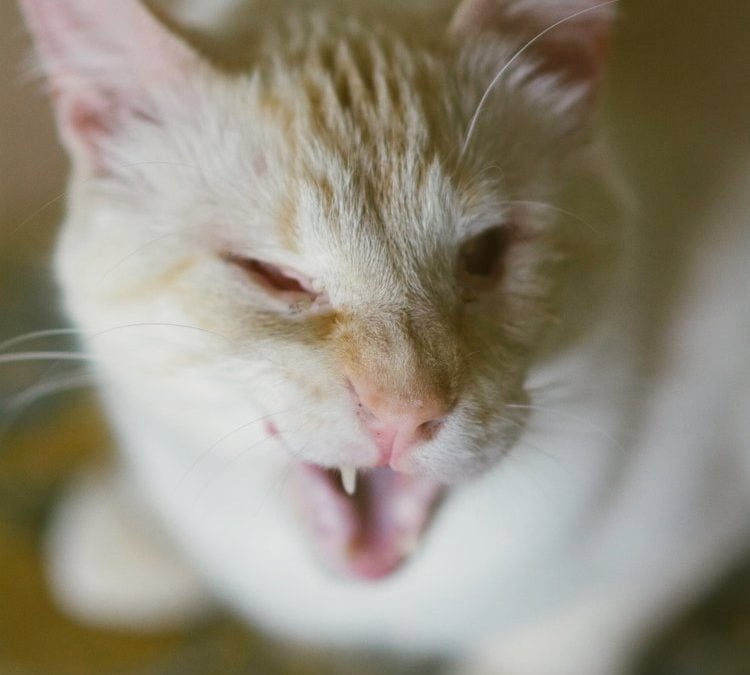Bilateral Anophthalmia: Understanding The Rare Condition Of Babies Born Without Eyes

Table of Contents
Causes of Bilateral Anophthalmia
The etiology of bilateral anophthalmia is complex and often remains unknown. While a definitive single cause is rarely identified, a combination of genetic and environmental factors usually contributes. Research suggests several potential causes:
- Genetic Mutations: Several genes are implicated in eye development, and mutations in these genes, such as PAX6, SOX2, and OTX2, can disrupt the process, leading to anophthalmia. These genetic abnormalities can be inherited or occur spontaneously.
- Chromosomal Abnormalities: Certain chromosomal abnormalities, like trisomy 13 (Patau syndrome) and trisomy 18 (Edwards syndrome), are associated with an increased risk of anophthalmia.
- Exposure to Teratogens: Exposure to certain substances during pregnancy, known as teratogens, can interfere with fetal development. Examples include some medications (particularly those taken during the critical period of eye development), certain infections (like rubella), and exposure to environmental toxins.
- Multifactorial Inheritance: In many cases, bilateral anophthalmia results from a complex interplay of multiple genetic and environmental factors, making it difficult to pinpoint a single cause.
- Unknown Causes: It's important to acknowledge that a significant percentage of bilateral anophthalmia cases have no identifiable cause, despite extensive investigation.
Diagnosis and Prenatal Detection of Anophthalmia
Early diagnosis of bilateral anophthalmia, whether prenatally or postnatally, is vital for appropriate medical and supportive care planning.
- Prenatal Diagnosis: Ultrasound scans during pregnancy are the primary method for prenatal detection. Experienced sonographers can identify the absence of eye structures in the fetal orbit, although the diagnosis might not always be entirely clear in early stages of pregnancy.
- Postnatal Examination: After birth, a thorough physical examination by a pediatrician or ophthalmologist confirms the diagnosis. Careful assessment of the eye sockets is conducted to rule out other conditions and determine the extent of the anophthalmia.
- Genetic Testing: Genetic testing may be recommended to identify potential underlying genetic causes, particularly if there’s a family history of similar conditions or other congenital anomalies. This can provide valuable information for genetic counseling and family planning.
- Importance of Early Diagnosis: Early diagnosis is crucial as it allows for timely intervention and preparation for the management of the condition, including planning for appropriate supportive care, prosthetic options, and therapies.
Treatment and Management of Bilateral Anophthalmia
While there's no cure for bilateral anophthalmia, comprehensive management focuses on enhancing the child's quality of life and maximizing their developmental potential. A multidisciplinary approach is usually necessary:
- Orbital Implants: Orbital implants are often placed in the eye sockets. This procedure helps to maintain the shape of the eye sockets, preventing their collapse and creating a more natural appearance for prosthetic eyes.
- Custom-Made Prosthetic Eyes: Custom-made prosthetic eyes provide cosmetic improvement, enhancing the child's appearance and self-esteem. These are carefully crafted to match the child's skin tone and facial features.
- Sensory Integration Therapy: This therapy assists children in processing and integrating sensory information from different senses and improving their ability to function in their environment.
- Occupational Therapy: Occupational therapy focuses on developing adaptive strategies for daily life, helping the child learn to navigate their world using other senses, such as touch and hearing, successfully.
- Social and Emotional Support: Providing social and emotional support to both the child and family is crucial. Therapy and support groups can help the child develop self-esteem, confidence, and positive coping mechanisms.
- Low Vision Services and Assistive Technology: While bilateral anophthalmia results in a lack of sight, low vision services and assistive technologies can help the child achieve independence and optimal functional skills.
The Importance of Early Intervention
Early intervention plays a critical role in maximizing the developmental potential of children with bilateral anophthalmia. Starting early intervention programs, including occupational and sensory integration therapies, assists in improving their daily living skills and adaptation. Early intervention significantly impacts their ability to reach developmental milestones and thrive despite the challenges of their condition.
Living with Bilateral Anophthalmia: Challenges and Support
Living with bilateral anophthalmia presents unique challenges, primarily social, emotional, and developmental. Strong support networks and resources are essential for families coping with this condition.
- Access to Support Groups: Connecting with other families facing similar situations can provide invaluable emotional support, practical advice, and shared experiences.
- Coping with the Emotional and Psychological Impact: Professional counseling for both children and parents is often beneficial in helping them cope with emotional challenges, build resilience, and navigate societal perceptions.
- Inclusive Education and Community Support: Ensuring inclusive education and community support creates a supportive and accepting environment for the child to thrive.
- Navigating Social Interactions: Guidance and strategies can help children navigate social interactions and address potential challenges related to their condition.
Conclusion
Bilateral anophthalmia is a rare congenital condition with significant implications for the affected child and their family. While the cause is often unknown, understanding the genetic and environmental factors involved is essential. Early diagnosis, through prenatal ultrasound or postnatal examination, allows for early intervention and management strategies, including orbital implants, prosthetic eyes, and various therapies. Families facing this challenge need access to a network of support to manage the emotional, social, and developmental aspects of living with bilateral anophthalmia. Learn more about bilateral anophthalmia and find support resources today. If you suspect bilateral anophthalmia, seek immediate medical attention.

Featured Posts
-
 Celtics Impressive Win Secures Division Crown
May 12, 2025
Celtics Impressive Win Secures Division Crown
May 12, 2025 -
 John Wick Franchise Rotten Tomatoes Scores And Fan Opinions Compared
May 12, 2025
John Wick Franchise Rotten Tomatoes Scores And Fan Opinions Compared
May 12, 2025 -
 Jose Aldo De La Defaite A La Victoire Par L Adaptation
May 12, 2025
Jose Aldo De La Defaite A La Victoire Par L Adaptation
May 12, 2025 -
 Virginia Giuffre Og Prins Andrew En Skandale Som Rystet Kongehuset
May 12, 2025
Virginia Giuffre Og Prins Andrew En Skandale Som Rystet Kongehuset
May 12, 2025 -
 Sheehans Reaction Ipswich Town Face Challenges Head On
May 12, 2025
Sheehans Reaction Ipswich Town Face Challenges Head On
May 12, 2025
Latest Posts
-
 Extended Border Controls In The Netherlands Impact Of Reduced Arrests And Asylum Applications
May 12, 2025
Extended Border Controls In The Netherlands Impact Of Reduced Arrests And Asylum Applications
May 12, 2025 -
 Netherlands To Maintain Heightened Border Security Despite Falling Asylum Numbers
May 12, 2025
Netherlands To Maintain Heightened Border Security Despite Falling Asylum Numbers
May 12, 2025 -
 Faber Retains Position After No Confidence Vote
May 12, 2025
Faber Retains Position After No Confidence Vote
May 12, 2025 -
 Asylum Volunteer Royal Honors Fabers Complete Policy Reversal
May 12, 2025
Asylum Volunteer Royal Honors Fabers Complete Policy Reversal
May 12, 2025 -
 Potenziale Zur Kostensenkung In Asylunterkuenften Ein Bericht Der Beiraete
May 12, 2025
Potenziale Zur Kostensenkung In Asylunterkuenften Ein Bericht Der Beiraete
May 12, 2025
